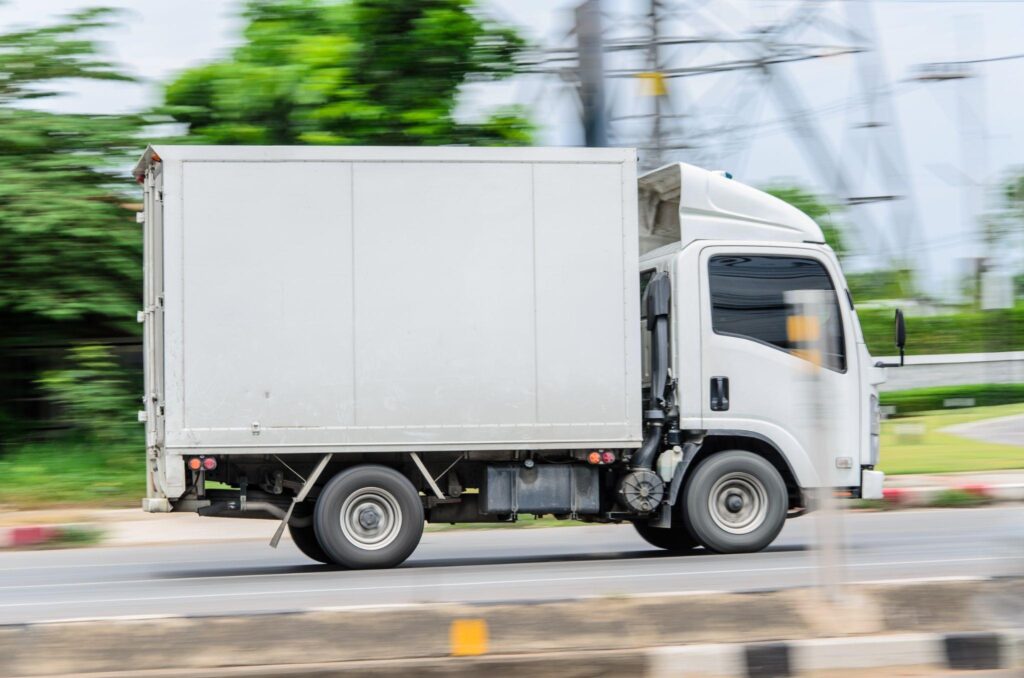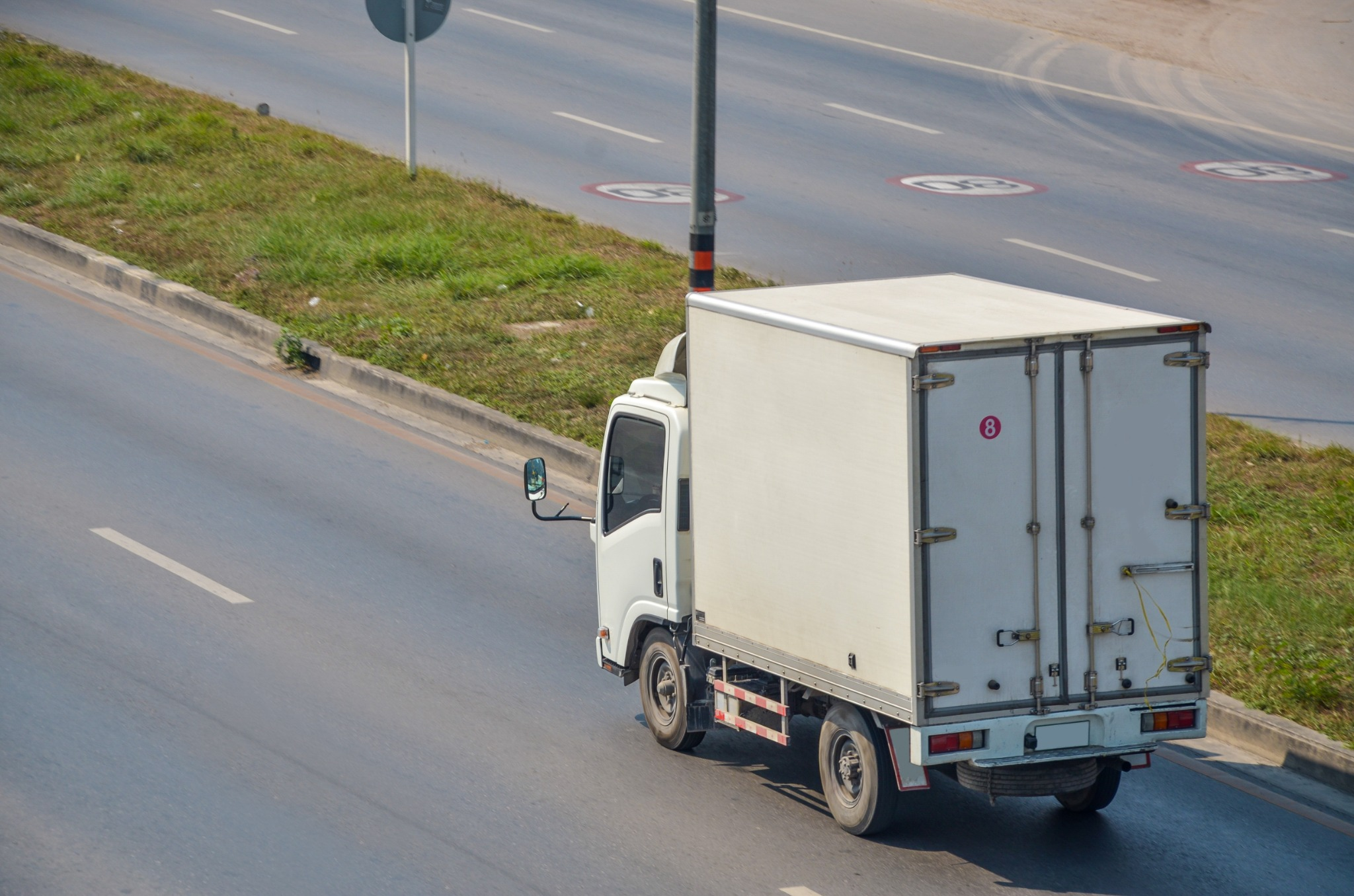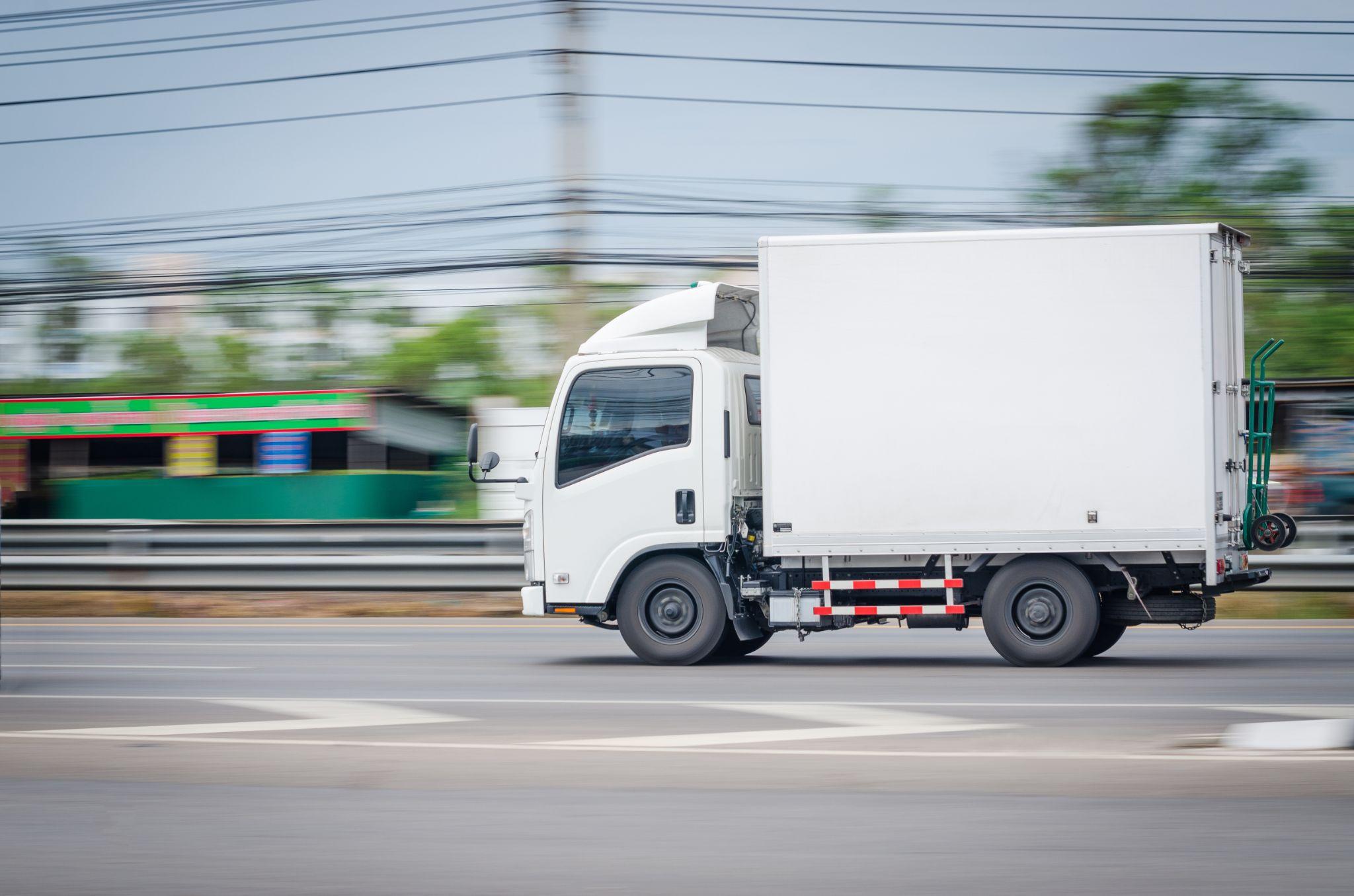With demand shifting, transport costs climbing, and promises tightening, the stakes are higher. Each logistics dollar faces CFO scrutiny.
You need decisions that move cost and service in the right direction, fast. That is why logistics optimization matters. It turns planning, routing, fleet utilization, and real-time execution into measurable gains you can defend in the boardroom.
Results win the argument. Track miles per stop, route hours, and first-attempt delivery rate by driver, zone, and day. Turn the best runs into a repeatable playbook with load order, time-window rules, access notes, and curbside scripts.
And when you are ready to scale, CIGO Tracker gives you the speed and visibility to do it.
What is Logistics Optimization, and Why Is It Crucial to Business Performance
Logistics optimization is a disciplined approach to planning and executing the movement of goods, enabling you to meet service goals at the lowest total cost. It blends process design with technology, then tracks results in a clear dashboard.
The goal here is simple:profitable growth.
Core Components of Logistics Optimization
To win on cost and service, you need the core pieces of logistics optimization working in sync. Treat them as one system that plans, executes, and learns.
- Route planning and dispatch: build tight sequences and time windows that cut miles and overtime.
- Network design: Place depots and cross-docks to shorten line haul and last-mile distances.
- Inventory and order orchestration: balance stock and service levels so orders move without friction.
- Automation and workflows: standardize planning, exceptions, proof of delivery, and returns to remove delays.
- Real-time tracking and alerts: see vehicles and orders as they happen, then act quickly.
- Data integration and collaborative planning: connect TMS ( Transportation Management System), WMS (Warehouse Management System), ERP (Enterprise Resource Planning), telematics, and customer systems for one reliable source of information..
When these parts are reinforced, you reduce travel distance and fuel use while improving lifting reliability, according to the U.S. Department of Energy’s FEMP.
Optimal Logistics, What “Good” Looks Like
Optimal logistics balances cost, service, and risk. The result is a dependable rhythm where plans hold, exceptions drop, and customers notice.
To keep everyone aligned, define what “good” looks like in measurable terms.
- On-time delivery rate by promise window
- Cost per mile, stop, and delivered order
- First-attempt delivery success
- Driver and asset utilization
- Detention time and dwell
- Service level compliance and claim rate
Because networks evolve, “good” is not fixed. Your mix, lanes, and constraints shift. So, treat optimal logistics as a moving target.
Review the metrics weekly, reset thresholds as seasons change, and keep tuning routes, rules, and capacity until the numbers hold. Share the scorecard widely so planners and drivers steer toward the same goals.
Risks of Suboptimal Logistics
Poor routing, fragmented data, and reactive workflows hit fast.
Costs climb through extra miles, overtime, fuel, and detention. Missed windows trigger reattempts, refunds, and churn. Then bottlenecks spread across the yard, dock, and returns desk, and you feel the drag every shift.
Freight volumes swing month to month, so risk multiplies when you cannot see and adjust.
Tight planning, clean integrations, and real-time visibility steady your network, as tracked by the BTS Freight TSI.
The Quantifiable Business Benefits of Logistics Optimization

Logistics optimization pays in hard numbers. Track cost and miles per stop, route hours and overtime, stops per hour, vehicle fill rate, on-time and first-attempt rates, re-deliveries, plus fuel and CO2e per stop.
As density rises and routes stabilize, miles and overtime fall, safe productivity and fill improve, first attempts climb, re-deliveries drop, and emissions per delivery decline.
Direct Cost Savings
Done right, you see direct savings fast, first on the route, then across your network.
- Fuel and mileage: Better route plans cut empty and out-of-route miles. The U.S. Department of Energy notes that plotting the most energy-efficient route improves fuel efficiency across the network, which cascades to cost savings.
- Lower overtime and detention: Structured schedules and tighter appointments reduce idle time; detention alone reduces driver earnings by about $1.1 to $1.3B and carrier income by $251 to $303M annually, as reported by the OIG.
- Fees and maintenance: smoother tours mean fewer toll-triggering detours, fewer layovers, and less wear on brakes and tires.
- Warehousing and carrying costs: better orchestration lowers safety stock, trims touches, and shortens storage days, so your carrying costs fall.
Productivity and Asset Utilization Gains
Productivity rises when your routes carry more work with less motion. Clustered stops increase delivery density, allowing you to complete more orders per hour.
Smarter backhauls push loaded miles up and waste down.
Then automation kicks in. Sequencing and live ETAs protect schedule integrity, so regains drop and planners stop firefighting.
As you expose real dwell and turn times, hidden capacity appears. Detention and long dwell time erode utilization and driver readiness, so fixing appointments and yard flow pays back quickly.
Customer Satisfaction and Retention
Customers judge you on the last mile. When deliveries arrive on time and in good condition, trust grows. That trust leads to repeat purchases, improved NPS, and fewer support escalations.
Raise first-attempt success, maintain clear ETAs, and resolve exceptions before they surprise the buyer with proactive delivery notifications. Do this and see satisfaction climb and churn fall, especially in e-commerce, where timeliness shapes behavior.
The evidence is clear; peer-reviewed studies link delivery timeliness and service quality to loyalty and intent to repurchase.
Sustainability & Corporate Responsibility
Sustainability is an operational discipline. When you tighten routes, prevent failed deliveries, and keep assets productive, emissions drop while costs follow.
Transportation is the largest U.S. emitting sector by share, accounting for approximately 28 percent of total emissions in 2022, according to the U.S. EPA.
Link your logistics optimization to ESG (Environmental, Social, and Governance) with order-level intensity and first-attempt success, so you can prove reductions that customers and regulators can trust.
Calculating Logistics ROI: Models, Metrics & Measurement
To prove value, you need clean baselines, simple math, and discipline. Choose the right metrics, apply proven ROI models, review examples, then avoid common pitfalls.
What to Measure, Key Logistics ROI Metrics
Set a clean baseline, then tie every metric to dollars.
- Cost per mile, stop, and delivery; miles per route; fuel burn, so planning shifts variable cost.
- Overtime hours and detention minutes per stop; convert time to wages, fees, and lost capacity you can reclaim.
- First attempt success and on time rate; tie reattempts, refunds, and churn to margin.
- Claims and return rate; price replacements, handling, and transport to reveal leakage.
- Planner productivity and exception rate; align with safety incidents and emissions per order to balance efficiency and risk.
Sample ROI Calculation Models
Pick a defensible model and show your calculations. Keep it consistent across teams.
- Pre and post comparison: measure three to six months before and after, then normalize volume and seasonality.
- Payback period: count months until cumulative benefits exceed all costs, including training and change management.
- Total cost of ownership: account for software, integrations, data cleanup, training, and support.
- Net present value: discount forecast cash flows at your hurdle rate, then test fuel, volume, and adoption.
For structure, you can lean on NIST’s economic analysis guidance and decision tools for standard benefit-cost methods. The EDGe$ methodology and related NIST guidance help standardize inputs and produce clear economic indicators such as NPV and IRR.
Common Pitfalls in ROI Measurement
ROI breaks when the full picture is missing.
Indirect savings often get overlooked when planners shift their focus back to analysis, and exceptions fall through the cracks.
Change management is undercounted if training, SOP updates, and adoption support are excluded from TCO. The impact is also overstated when the same mile reduction is presented as both fuel savings and time savings.
Then there are returns. They distort cost and hide in transport, handling, and service queues.
Tie first-attempt success, proactive communication, and claim prevention to return rate, and you surface real dollars. Retailers faced approximately $890 billion in returns in 2024, according to the NRF, so consider including reverse logistics in your model.
Plan it. Measure it. Report it.
Technology’s Role in Enabling Optimal Logistics

Technology turns plans into performance. With the right stack, you can automate decisions, predict issues, and view everything in real-time across platforms, automation, and analytics.
Next-Generation Logistics Technologies
You win when your stack sees, predicts, and acts in real time. Next-generation tools connect routes, assets, and orders into one operating picture.
Start with a route optimization platform such as CIGO Tracker to cut miles and hold time windows. Add AI and predictive analytics to sharpen ETAs and anticipate demand. Layer IoT and telematics for location, temperature, and door events. You can also use SaaS analytics to track cost, service, and emissions.
Keep the architecture open and interoperable.
Integrate ERP, WMS, and e-commerce so data flows end to end and plans reflect operational reality.
Automation and Real-Time Decision Making
Automation turns plans into steady performance you can count on.
It handles dispatching, dynamic re-routing, yard moves, and returns handling while your team focuses on exceptions and service. You set the rules once, then the system applies them every shift.
As conditions change, decisions update in real time. Routes adjust, time windows tighten, and customers get accurate notifications. You cut idle minutes, protect schedules, and keep drivers moving.
Most importantly, the wins stick after go-live, since automation keeps doing the right thing at speed, route after route.
Data, Visibility & Predictive Analytics
Data only matters when you can see it, trust it, and act on it. With live order and vehicle feeds, you shift from reacting to anticipating. You spot the slip, adjust the route, and protect the promise.
As you add predictive analytics, you forecast volume, dwell, and weather impacts, then run scenarios to test constraints before peaks hit. Your control tower unifies cost, service, emissions, and risk, so you steer with one source of truth.
And when you align dashboards to ESG, you track intensity per order and prove reductions stakeholders accept, using established energy and emissions frameworks for consistency.
Organizational Change for Sustainable Optimization ROI
Sustained logistics ROI is built by people and processes working in agreement. Align stakeholders, upskill teams, and run tight feedback loops so gains stick and scale across regions.
Change Management and Stakeholder Buy-In
Begin by getting finance, operations, IT, and sales working from the same playbook.
Explain the business’s why in plain language, then translate it into a short set of KPIs everyone can see. Pilot a region, publish quick wins, and hold weekly reviews so momentum builds.
Keep communication constant with delivery visibility that makes the status obvious to every stakeholder. Ask for feedback, remove blockers fast, and celebrate improvements that matter to frontline teams.
As they feel fewer replans and smoother days, adoption climbs.
Then assign clear owners, give each function a visible scoreboard, and empower action. By doing this, you create durable buy-in, not temporary enthusiasm.
Staff Training and Upskilling
Training sticks when your people can use the tools instinctively. You teach for real routes, not theory. Keep it practical, fast, and repeatable, so confidence grows with every shift.
- Planning workflows: build, sequence, and lock routes; adjust constraints without breaking promises.
- Mobile app mastery: scan items, capture photo POD, add notes, and message customers.
- Exception handling: resolve bad addresses, missed windows, and damage with clear roles.
- Safety and compliance: follow DVIR, HOS limits, and yard protocols.
- Refreshers and coaching: run short sessions at 30 and 90 days, then reinforce with ride-alongs.
Continuous Measurement and Improvement Loops
You make gains stick by measuring, learning, and tuning on a schedule. Set baselines, lock KPI definitions, and review them monthly. Keep the loop tight.
- KPI cadence: weekly ops huddles, monthly executive reviews, quarterly strategy resets.
- Route hygiene: retire stale routes, update time windows, and fix geofences and service times.
- Constraint tuning: adjust dwell targets, loading rules, and vehicle capacities as data shifts.
- Exception analytics: tag root causes, assign owners, and close the loop within seven days.
- Scorecards: one source of truth that shows cost, service, safety, and emissions.
Driving ROI Through Logistics Optimization

To turn plans into profit, you need tools, proof, and speed. Here is how CIGO Tracker drives ROI, a real outcome, and rapid, measurable rollout.
How CIGO Tracker Supports Optimal Logistics
With CIGO Tracker, you plan, execute, and adapt in one place. Our optimized routing engine cuts mileage and protects time windows with dynamic updates.
You see every order in real time, share live ETAs, and capture proof-of-delivery photos, so exceptions stay contained. Dispatchers use the Planner to create, edit, and optimize trips as the day unfolds, then keep routes on track without guesswork.
Integrations link your ERP, WMS, and e-commerce flows, while enterprise safeguards cover encryption, GDPR and CCPA compliance, SOC 2 Type 2 controls, and regular penetration testing.
The result: you move faster, trim miles, and present a clear ROI your finance team will trust.
Rapid Implementation and Ongoing ROI Visibility
Move fast and see impact quickly with CIGO Tracker. In Planner, you create, edit, and optimize daily trips, then control routes in real time as the day unfolds.
You also get clear ROI visibility. Dispatchers and managers track live delivery status, ETAs, and proof-of-delivery photos in one view, then turn results into finance-ready snapshots by exporting Planner reports to CSV.
Start with your highest-variance region, set baselines, and review weekly.
As your numbers improve, scale to new areas without reworking the process. This combination of real-time execution and simple reporting helps you trim miles, reduce reattempts, and present a monthly ROI update that both operations and finance can trust.
Maximizing the ROI of Your Logistics Optimization Initiatives
To maximize ROI, you prioritize high-impact opportunities, build a tight business case, track key benchmarks, and avoid common traps. Use this checklist, metrics, and lessons.
Executive Checklist for ROI-Focused Optimization
With this checklist, you can focus effort, prove value, and scale what works.
- Frame the problem: top cost or service pain.
- Establish baselines and clear KPI definitions.
- Map data flows across orders, vehicles, and telemetry.
- Pilot one high-variance region; learn fast.
- Measure weekly, assign owners, share visuals.
- Scale and standardize playbooks; communicate wins early.
Key Metrics and Benchmarks Leaders Should Monitor
Track what proves value, then compare against baseline and peers.
- On-time and first-attempt success.
- Cost per delivery, stop, and mile.
- Miles per order; stops per hour.
- Detention minutes and dwell by location.
- Return and claim rate.
- Emissions per order for ESG.
Common Pitfalls and How to Avoid Them
Keep your ROI real by dodging these traps and tightening execution.
- Start with process clarity, then document time windows, access rules, and receiving constraints.
- Improve your data quality by validating addresses, geofences, and service times.
- Resource the change with funded training and updated SOPs.
- Prioritize reverse flows; returns inflate transport and handling costs, per NRF’s 2024 projection.
Your Next Step to Measurable Logistics ROI

Logistics optimization is a fast path to profit, resilience, and loyalty. You cut miles, time, and waste while raising service reliability.
The financial case is straightforward. Lower variable costs, stronger asset utilization, and fewer reattempts lift logistics ROI. The sustainability case is strong as well, since tighter routes and fewer failed deliveries reduce emissions.
If you want a practical path to optimal logistics, we can help you scope the pilot, define the KPIs, and prove payback. Request a demo, see CIGO in action, or contact our logistics team.
We will walk through your data, your constraints, and your goals, then show you a plan you can defend upstairs.
Frequently Asked Questions
How should we evaluate ROI from logistics optimization?
You start with baseline data on cost per stop, first-attempt success, dwell minutes, and fuel. Then model scenarios toward optimal logistics using three to six months of pre-/post-results. Include training and integration in the total cost to calculate a realistic logistics ROI.
Will this disrupt my current operations?
You can roll out smoothly when you pilot it first. Start in one region with a small route set and keep your current process as a week-one fallback. Define success, train briefly, and run shadow routes for a few days. Go live once metrics improve, then review weekly with a rollback plan.
How secure and reliable are optimization solutions?
You should expect hardened cloud infrastructure, encryption in transit and at rest, and role-based access with audit trails.
Confirm incident response, uptime SLAs, and penetration testing. Keep integrations minimal, enforce least-privilege, and document retention and export paths. Strong governance speeds approvals and builds trust.
What if my network is highly complex or unique?
Complexity often increases ROI. You get leverage when constraints are accurate. Capture service times, access rules, driver qualifications, equipment limits, and customer windows, then map data carefully. Pilot realistic scenarios that reflect seasonal peaks and exception-heavy stops. Measure outcomes, adjust constraints, and scale once results hold.





